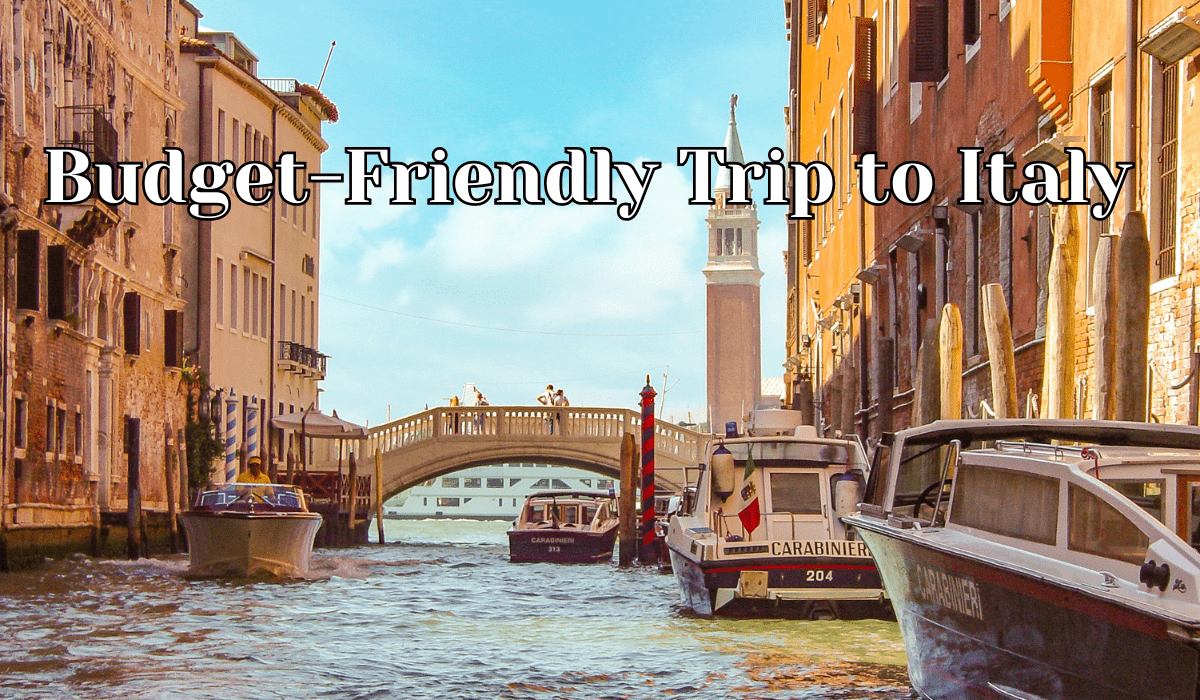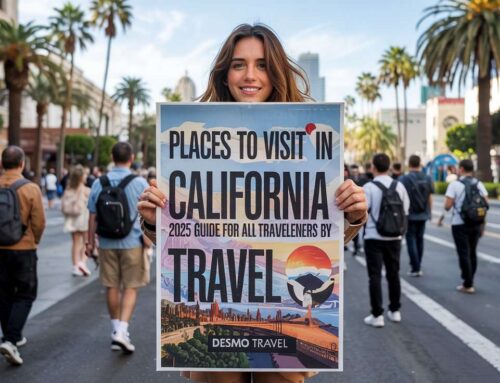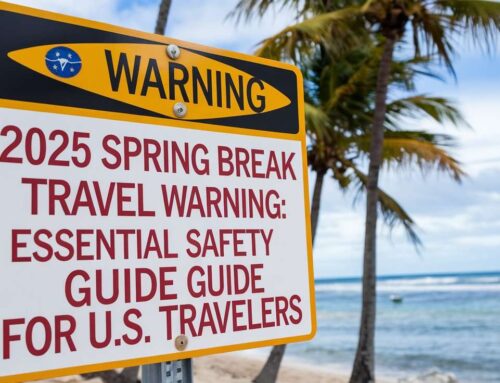How to Plan a Trip to Italy on a Budget, According to a Local
Contents

Budget-Friendly Trip to Italy
For many, visiting Italy is a dream trip — one that’s worth saving up for. There are certainly plenty of glamorous resorts, Michelin-starred restaurants, and exclusive experiences that you might want to splurge on, but a trip to Italy doesn’t have to break the bank. In fact, according to Numbeo, the cost of living is, on average, 19.8 percent lower in Italy than in the U.S.
I’ve been living in Rome for nearly five years and visited Italy many times before that, so I’ve found some strategies for traveling around the country without overspending. Here’s how to plan a trip to Italy on a budget.
Planning Your Trip
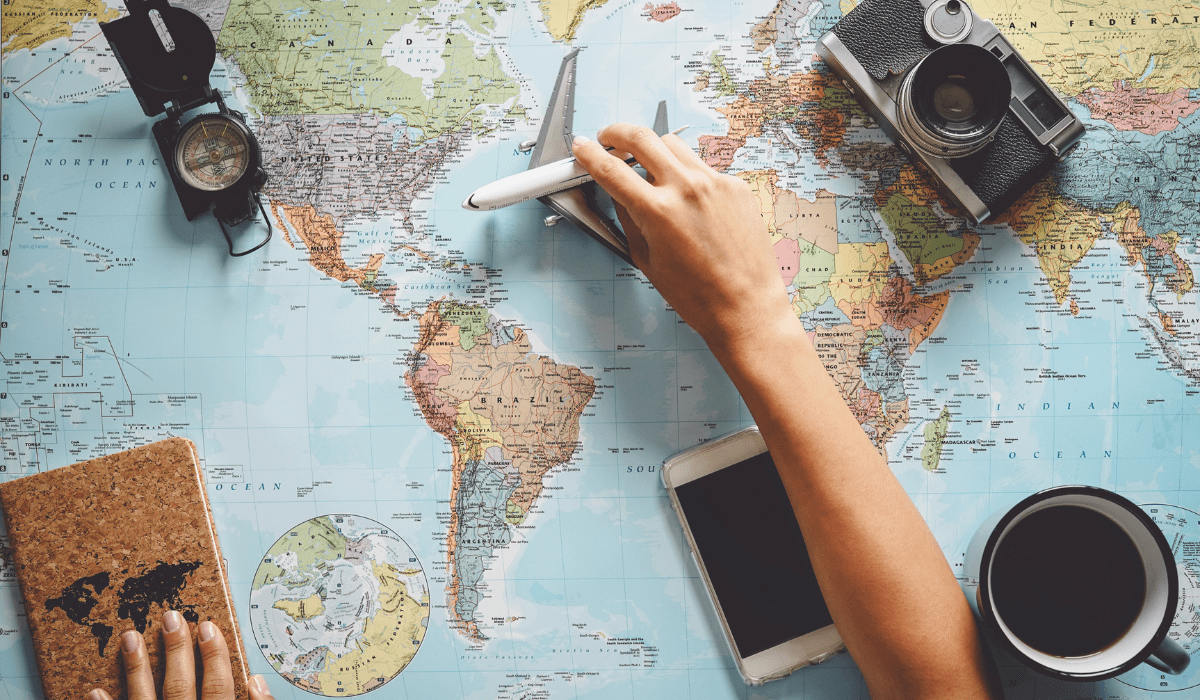
Budget-Friendly Trip to Italy
Want to visit Italy in the summer? So does everyone else — and increased demand drives up the prices on flights, hotels, and even tours. If you want to save some money, plan your trip for the low season (November through March), when you’ll find better rates and fewer crowds. Just keep in mind that while cities like Rome, Florence, Venice, and Milan are year-round destinations, coastal destinations like the Amalfi Coast all but shut down in the winter.
It’s a good idea to start planning your trip to Italy about three to six months in advance, or even longer if you’re planning a trip in the high season and want to be sure you’ll have plenty of options. According to Attilia Avino, who together with her sister Mariella runs Palazzo Avino, a member of the Leading Hotels of the World on the Amalfi Coast, they’re already getting bookings for 2025.
How to Save Money on Flights

There’s no denying that flights are more expensive now than they were in the past — and flights to Italy are no exception. According to Priceline, the average cost of a round-trip flight to Rome in May 2024 is $1,183, while in May 2023 it was $977. That’s an increase of 21 percent in the span of a year.
Tips for Finding Affordable Flights
- Travel in the Off-Season: “The two months with by far the highest number of cheap flights to Italy are January and February. Aside from winter travel, shoulder season (March through May and September through November) is known for cheap Italy deals.
- Be Flexible: When looking for ways to save money on flights to Italy, it’s important to be flexible. Try using the “anywhere” feature on Google Flights to compare flight costs to different cities in Italy. If, for example, you want to visit Rome but find that the cheapest flight is to Florence, you could save hundreds of dollars by flying to Florence and then taking the train to Rome.
How to Find an Affordable Hotel

Budget-Friendly Trip to Italy
According to Priceline, the average price of a hotel room in Rome rose from $180 in spring 2023 to $301 in May 2024 (that’s a whopping 67 percent increase), but there are still deals to be found. Accommodations in Italy run the gamut from historic grand dames with white glove service to spartan bed-and-breakfasts or hostels with shared dorms. And in many Italian cities, monasteries run guest houses that offer affordable rooms but might have a curfew. Sites like desmotravel.com will give you plenty of options that will likely fit your budget.
Alternative Accommodation Options
- Agriturismo: If you want to stay in the countryside, consider booking a room at an agriturismo. These are essentially farm stays, and some have working farms that provide fresh fruit and vegetables and produce cheese or charcuterie, which they serve at their restaurant or sell at local markets. Better yet, they’re often more affordable than hotels or resorts.
- Airbnb: Airbnb is an obvious choice, but it isn’t always more affordable than staying at a hotel, especially in in-demand neighborhoods in major cities like Rome, Florence, and Venice. It’s a good idea to compare the prices of Airbnbs with budget hotels or hostels when deciding where to stay. Accommodations in neighborhoods outside the historic center will usually cost less than staying near the major monuments.
Transportation in Italy
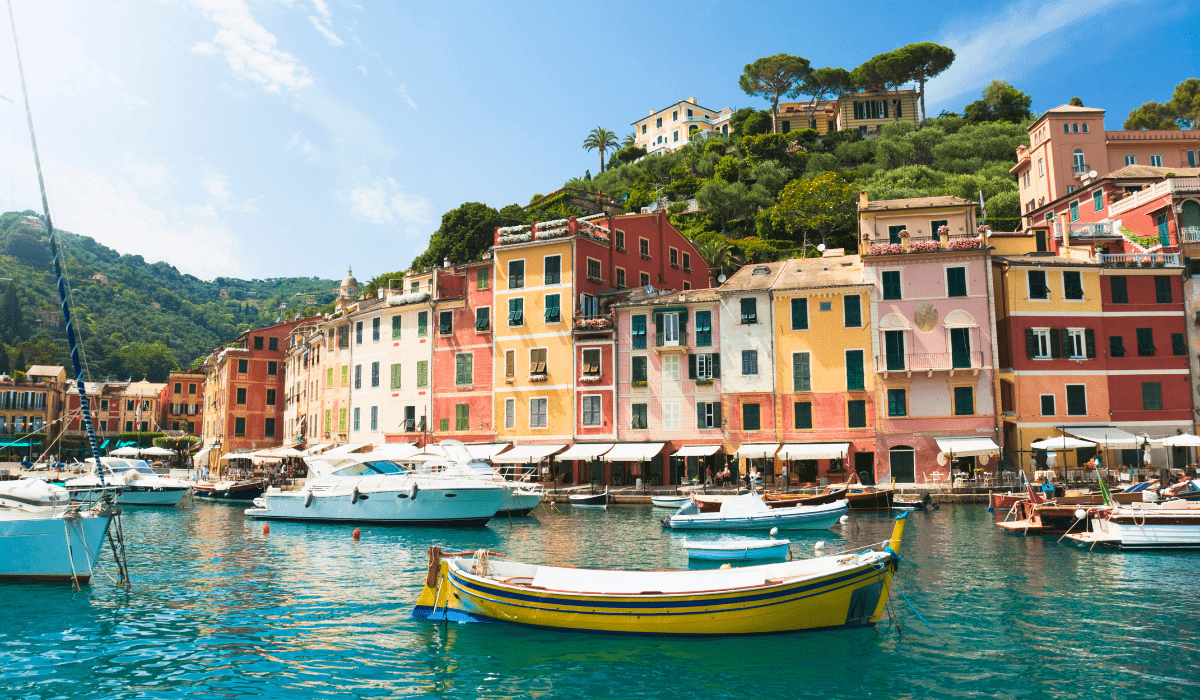
Budget-Friendly Trip to Italy
Italy has an extensive network of trains and buses that transport people around the country, and most cities have public transit (metros, buses, and/or trams) to move around within them. The key to saving money when traveling between cities is figuring out which train you need to book and booking it at the right time.
Tips for Budget-Friendly Travel
- Book High-Speed Trains in Advance: High-speed trains like the Frecciarossa travel at speeds up to 300 kilometers per hour. Tickets on the high-speed trains should be booked in advance because the longer you wait to book, the higher the price will rise.
- Consider Intercity and Regional Trains: There are also intercity trains and regional trains, which cost less but take longer than high-speed trains. If you want to visit small cities such as Parma or Tropea, you might need to transfer from a high-speed train to a slower intercity or regional train. Use Trenitalia.com or Italiarail.com to search for and book the best train routes.
- Utilize Public Transit in Cities: To get around cities like Rome, Milan, and Bologna, the metro is often the cheapest and fastest way to go. In Rome, for example, a single ticket costs €1.50 and is valid on the metro, buses, and trams for 100 minutes. (The price is set to rise to €2 in July.) For €7, you can buy a 24-hour pass that grants you unlimited rides.
In Venice, the vaporetto is the name for the public water buses that ply the Grand Canal and ferry passengers to the outer islands — and they are significantly cheaper than taking a water taxi. If you just want to cross the Grand Canal, look for the gondola traghetto. These gondolas operate in points where there isn’t a bridge nearby — like between Piazza San Marco and Punta della Dogana — and cost €2 to ride.
Eating on a Budget

Eating out in Italy can put a dent in your wallet, but it doesn’t have to. There are many different types of restaurants in Italy, ranging from casual take-out spots to fine dining restaurants with elaborate tasting menus. According to Numbeo, the average cost of a three-course meal for two people at a mid-range restaurant in Italy is €60, while the average cost of a meal at an inexpensive restaurant is €15.
Affordable Dining Options
- Trattorias and Osterias: When I want to sit down for a casual meal of local specialties with affordable prices, I book a table at a trattoria or an osteria.
- Pizzerias: Eating at a pizzeria is also a good option that’s usually more affordable than eating at a restaurant. Sit-down pizzerias are usually only open for dinner, but sometimes I like to get pizza al taglio (by the slice) for a quick lunch.
- Friggitorias and Bars: Popping into a friggitoria (a place that specializes in fried food) is also a good option for a quick bite. Most bars have a selection of pastries and sandwiches. To save a bit of money, join the locals eating and drinking their espresso standing up at the bar counter instead of sitting down and getting table service.
Free and Low-cost Activities
Visiting museums, archeological sites, and other cultural attractions in Italy is generally quite affordable. Tickets sometimes cost just a few euros or at most about €25. For popular attractions like the Colosseum, Vatican Museums, and Galleria Borghese in Rome, the Uffizi Galleries and Pitti Palace in Florence, and the Doge’s Palace and Galleria dell’Accademia in Venice, it’s best to book tickets in advance. At the Colosseum, for example, tickets might sell out, forcing you to fork over a lot more money to join a guided tour. If you want to save money, book a basic entry ticket in advance and listen to one of Rick Steve’s free audio tours.
Money-saving Tips for Attractions
- Free Museum Days: State-run museums throughout Italy are free on the first Sunday of every month and on some holidays, like the Festa della Liberazione (Liberation Day) on April 25, but in some cases, you’ll still need to book tickets online in advance.
- Visit Churches and Public Parks: There are also lots of things to do in Italy that are totally free all year. Most churches are free to enter — and some of the most incredible Renaissance and Baroque art you’ll see in Italy is inside them. Italy’s churches can also be a cool, quiet place to rest your feet if you’ve been walking around for hours. Public parks such as Villa Borghese in Rome are also free. And of course, strolling around and simply admiring the beautiful piazzas, fountains, and monuments doesn’t cost a cent.
More Money-saving Tips
If you’re visiting Italy in the summer, you’ll probably want to soak up the sun on the beach, but prices at the beach clubs range wildly from about €15 to upwards of €100 for a sunbed and umbrella — not including food and drinks. While prices tend to be higher in touristy areas like Capri, Positano, the Italian Riviera, and the Costa Smeralda, you don’t have to fork over a fortune to enjoy the beach. Instead seek out free public beaches (spiaggia libera) — just make sure to bring your own towel.
You might also want to consider visiting secondary cities, such as Parma, Modena, Siena, Perugia, Orvieto, Tropea, and Lecce, where accommodations, experiences.

